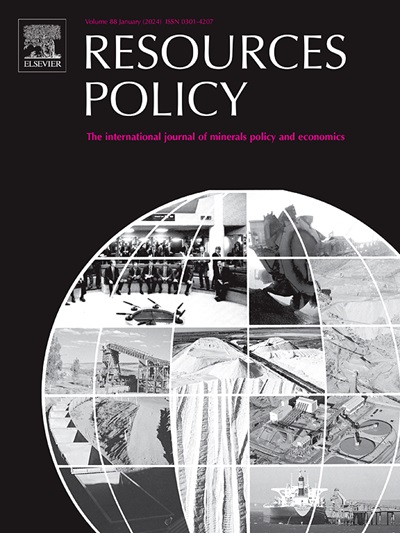在坚实的基础上:评估英国结构石的扩大潜力
IF 10.2
2区 经济学
0 ENVIRONMENTAL STUDIES
引用次数: 0
摘要
混凝土是建筑中普遍使用的材料,主要由水泥结合的碎石灰石组成,其生产占全球碳排放量的8%以上。相比之下,生产实心石头所需的能源要少得多,其加工过程仅限于提取、切割和运输。这使得它成为越来越有吸引力的低碳替代品。最近英国结构工程师和石匠之间的合作已经证明了承重和预应力石材建筑系统的技术可行性。然而,在建筑中扩大使用结构石的潜力在很大程度上仍未被探索。为了评估英国结构石的扩大潜力,我们的研究采用了定性和定量设计,包括对英国和欧洲的采石场和矿山经理进行了19次深入访谈。我们发现,正如我们的受访者样本所认为的那样,据报道,在英国扩大结构石材生产的最大瓶颈是劳动力的可用性和成本;建筑美学和石材尺寸偏好的改变可以减少浪费、能源使用并降低成本;尽管作为一种低碳材料,人们对结构石材产品的兴趣越来越大,但对其的需求却不足;石材的脱碳潜力取决于对该行业的投资;总的石材资源并没有受到限制,但扩大现有采石场或开设新采石场的过程需要精简,以便迅速扩大规模。我们希望我们的研究能够成为战略规划和投资的基础,使石材能够减少建筑的具体排放,并在经济上大规模生产。本文章由计算机程序翻译,如有差异,请以英文原文为准。
On solid ground: Assessing the scale-up potential of structural stone in the UK
Concrete, a ubiquitous material in construction, is primarily composed of crushed limestone bound by cement, the production of which accounts for over 8% of global carbon emissions. Solid stone, in contrast, requires significantly less energy to produce, with its processing limited to extraction, cutting, and transportation. This makes it an increasingly attractive low-carbon alternative. Recent collaborations between structural engineers and stonemasons in the UK have demonstrated the technical feasibility of load-bearing and prestressed stone building systems. However, the potential for scaling up the use of structural stone in construction remains largely unexplored. To assess the scale-up potential of structural stone in the UK, our research employed a qualitative and quantitative design involving 19 in-depth interviews with stone quarry and mine managers across the UK and Europe. We found that, as perceived by our sample of interviewees, the biggest reported bottleneck to scaling up structural stone production in the UK is the availability and cost of labour; that a change in architectural preference of aesthetics and stone sizes could reduce waste, energy use and drive down costs; that there is lack of demand for structural stone products despite the increasing interest in it as a low-carbon material; that the decarbonisation potential of stone rests on investment in the sector; and that the total stone resource is not limiting but the process to extend existing, or open new, quarries needs streamlining to allow for rapid scale up. We anticipate our study to be a foundation for strategic planning and investment, enabling stone to reduce the embodied emissions of buildings and be produced economically at scale.
求助全文
通过发布文献求助,成功后即可免费获取论文全文。
去求助
来源期刊

Resources Policy
ENVIRONMENTAL STUDIES-
CiteScore
13.40
自引率
23.50%
发文量
602
审稿时长
69 days
期刊介绍:
Resources Policy is an international journal focused on the economics and policy aspects of mineral and fossil fuel extraction, production, and utilization. It targets individuals in academia, government, and industry. The journal seeks original research submissions analyzing public policy, economics, social science, geography, and finance in the fields of mining, non-fuel minerals, energy minerals, fossil fuels, and metals. Mineral economics topics covered include mineral market analysis, price analysis, project evaluation, mining and sustainable development, mineral resource rents, resource curse, mineral wealth and corruption, mineral taxation and regulation, strategic minerals and their supply, and the impact of mineral development on local communities and indigenous populations. The journal specifically excludes papers with agriculture, forestry, or fisheries as their primary focus.
 求助内容:
求助内容: 应助结果提醒方式:
应助结果提醒方式:


